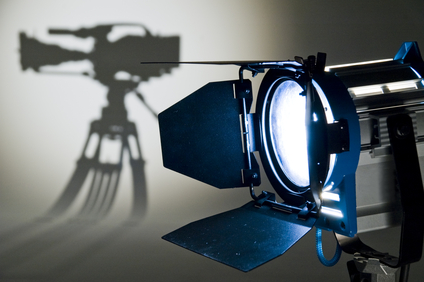The lead-in music begins, an outline is drawn on the wall, then Alfred Hitchcock’s shadow steps onstage and perfectly fits the outline. So began another episode of “Alfred Hitchcock Presents,” capturing the imagination of prime-time audiences. Even now, Hitchcock’s work is a videographer’s primer in how to use light and shadow to set the mood.
Always remember, lighting not only affects the clarity of your video work but also how it feels.
Light: Which Kind Does the Scene Need?
Richard K. Ferncase’s “Basic Lighting Worktext for Film and Video” (1992) is the book on lighting you are most likely to read at film school. For a deep dive into the topic of lighting, you can do no better than to study Ferncase and work through the exercises given. This article will give you only a taste of a topic you could spend a lifetime investigating.
First and foremost, it all starts with light type and texture. You first need to know what type of light you need. Some common types include:
- Hard light: Think small, intense, harsh. During the early afternoon, unfiltered by clouds, sunlight throws shadows with sharp, distinct edges. Hard light comes from a single source and travels without angular deflection to the surface. For example, Hitchcock’s shadow was created by hard light. The mood cast by this type of light can range from eerie and hidden to in-your-face and threatening. When using artificial lighting, remember that the smaller the source, the harsher the light will be.
- Soft light: A beautiful woman in a flowing white dress, she holds a red rose and shakes her long, brown hair as she walks towards her waiting escort. The lighting is gentle and without harsh shadows. This is soft lighting. The moods emphasized with this type of lighting include romantic, seductive, non-threatening and comfortable. Remember, the larger and more diverse the source of light is and the wider the coverage, the softer the light will be. Soft light arrives from a variety of angles and can seem more natural than hard light. But, be careful about depending too much on soft light because it can get wearing on your audience, if not interrupted by hard light scenes to wake them up.
- Combination light: Typically, you will work with lighting that lies somewhere in the range between hard and soft. When setting up the scene, try moving the lights around to see how it affects the mood. When shooting outside, you can move from direct light to shade. Inside, you can switch the size of the lamps and the diffusion to adjust mood. Shades, drapes or blinds might also be helpful inside to help lighten, darken or provide mixed light to the scene. Your inner artist will be able to feel the mood as it changes, so trust your instinct.
Use Color to Set the Mood
Videographers have special tricks in the tool bag. One of those is a knowledge of how color affects the psyche. To excel as a film director, you must not only be an artist but a psychologist.
As the artist carefully chooses from the palette to get just the right combination of colors, so the film director can influence the mood by adjusting the light color as well as the set and costume color. If you don’t see how color can affect mood, just think about our language—we see red when we’re angry, sometimes we become green with envy and occasionally we feel blue. Colors are powerful triggers and have a dramatic influence on mood.
Many medical professionals study color and often advise patients to make adjustments in their living spaces to better facilitate desired moods. Color consultant Leslie Harrington explains, “What color you paint your walls isn’t just a matter of aesthetics. It’s a tool that can be leveraged to affect emotions and behavior.”
If you are serious about film, you should study the technical aspects. Find out all you can about cameras, lights and the array of tools at your disposal. Then, film with your heart and see with your emotions, for your viewers are hoping to not only view your film but to experience it.
Guest article


